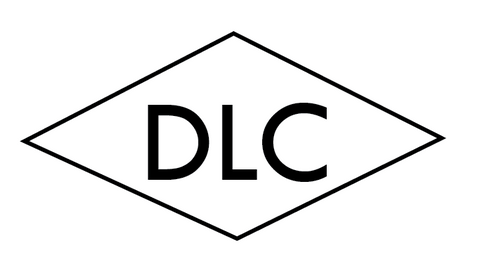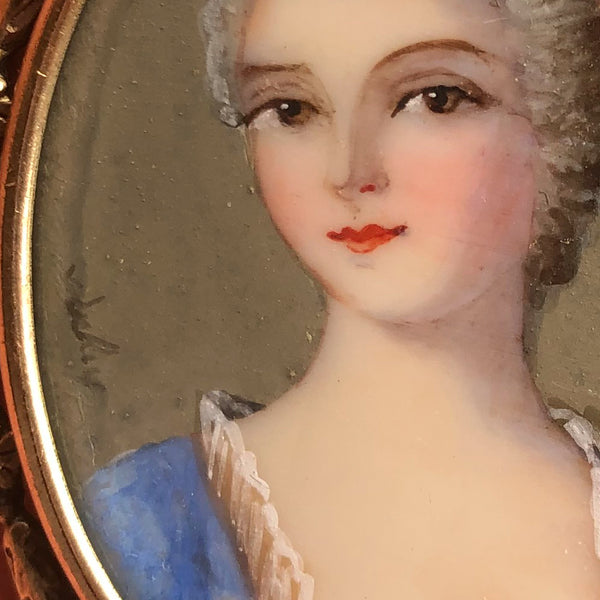

The back says Gold-Filled, Germany and has a small diamond mark with the letters DLC or OLC.

There is a signature on the left but I can't read it. Look at the exquisite and bold paint detail in her face and eyes.

I can't tell if it is painted on ivory or wood or porcelain. Her hair is powdered and her clothes certainly seem 1800-1850? Notice the lace collar and large pink bow at the top of her dress. Here is a close up of her headband. There is a touch of enamel detailing left on just the tops of the frame.

Ok - let's look at the history of powdered wigs. t
This 1749 pastel Portrait of Marie-Josèphe of Saxony, Dauphine of France (1731–1767) by Jean-Étienne Liotard shows us a time when powdered hair is in fashion, but the hair is not yet SO BIG.

Narrowing in, I think by the 1770s, hair is getting big but in the 1750s and 1760s, women are wearing hair curled but still fairly natural. We also see square necklines and the bow front detail in style in the 1750s and 1760s.
This 1753 portrait of an Unknown Lady at the Spinett, by Johann Heinrich Tischbein has the pleated square neckline, bow details and flowers in powdered hair that predates taller hair styles of the 1770s (think Marie Antoinette).

This 1757 Portrait of a Woman, possibly Madame Charles Simon Favart (1727–1772) by French artist, François Hubert Drouais on display at the Metropolitan Museum of Art seems very close in fashion and hairstyle, though her makeup is more naturalistic.

This portrait by Jean-Étienne Liotard from 1762 of the Archduchess Maria Antonia (later THE Marie Antionette) has the same bow front detail as our miniature.

This portrait of Portrait of Countess de Bavière-Grosberg from 1780 has remarkably similar dress neckline. The makeup fashion is also similar: the Countess de Bavière-Grosberg wears white face makeup, strong lip and cheek rouge, and may have darkened eyebrows, in this portrait by Alexander Roslin, 1780. But this portrait has much larger hair that came into fashion in the 1770s.

